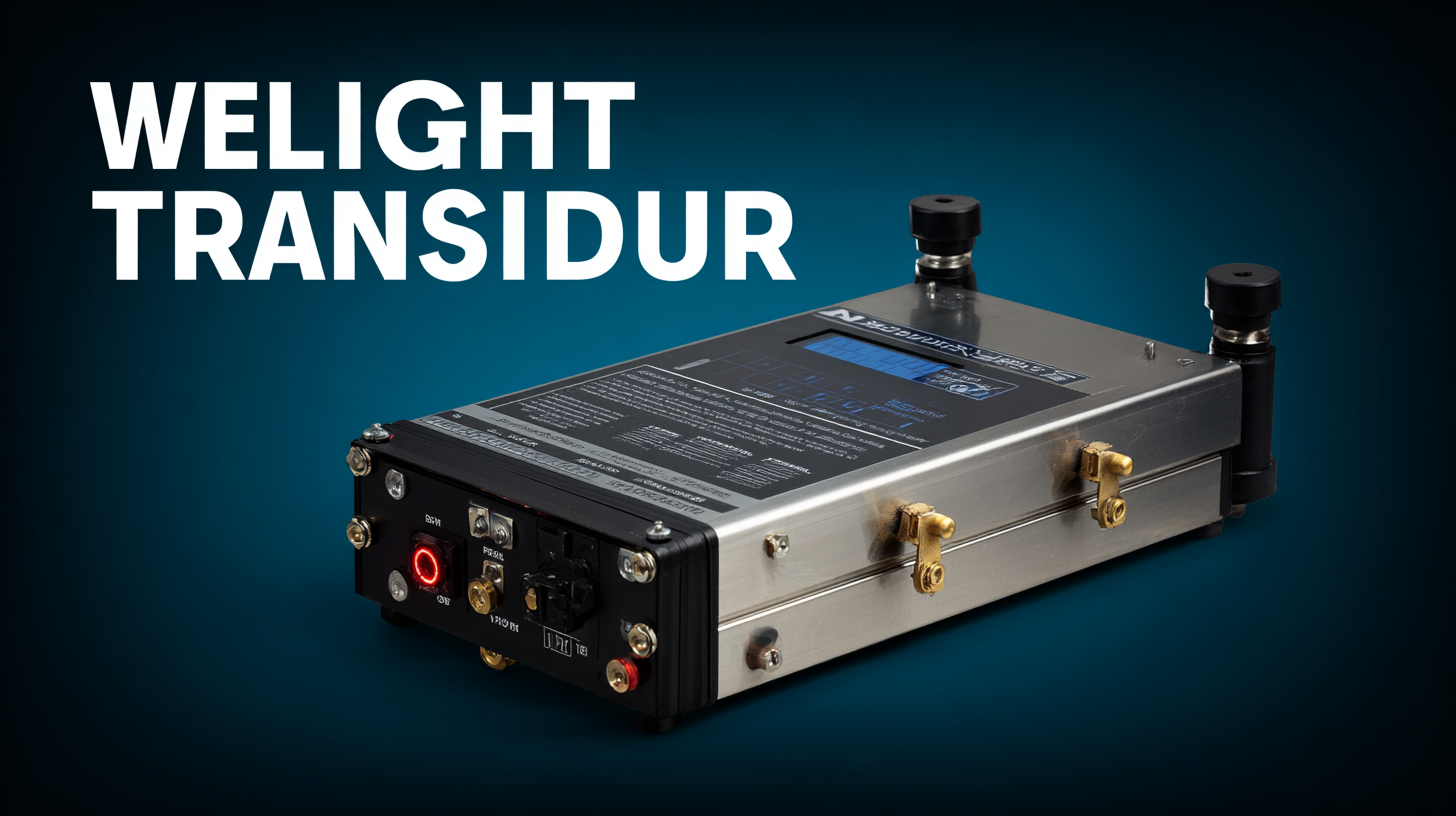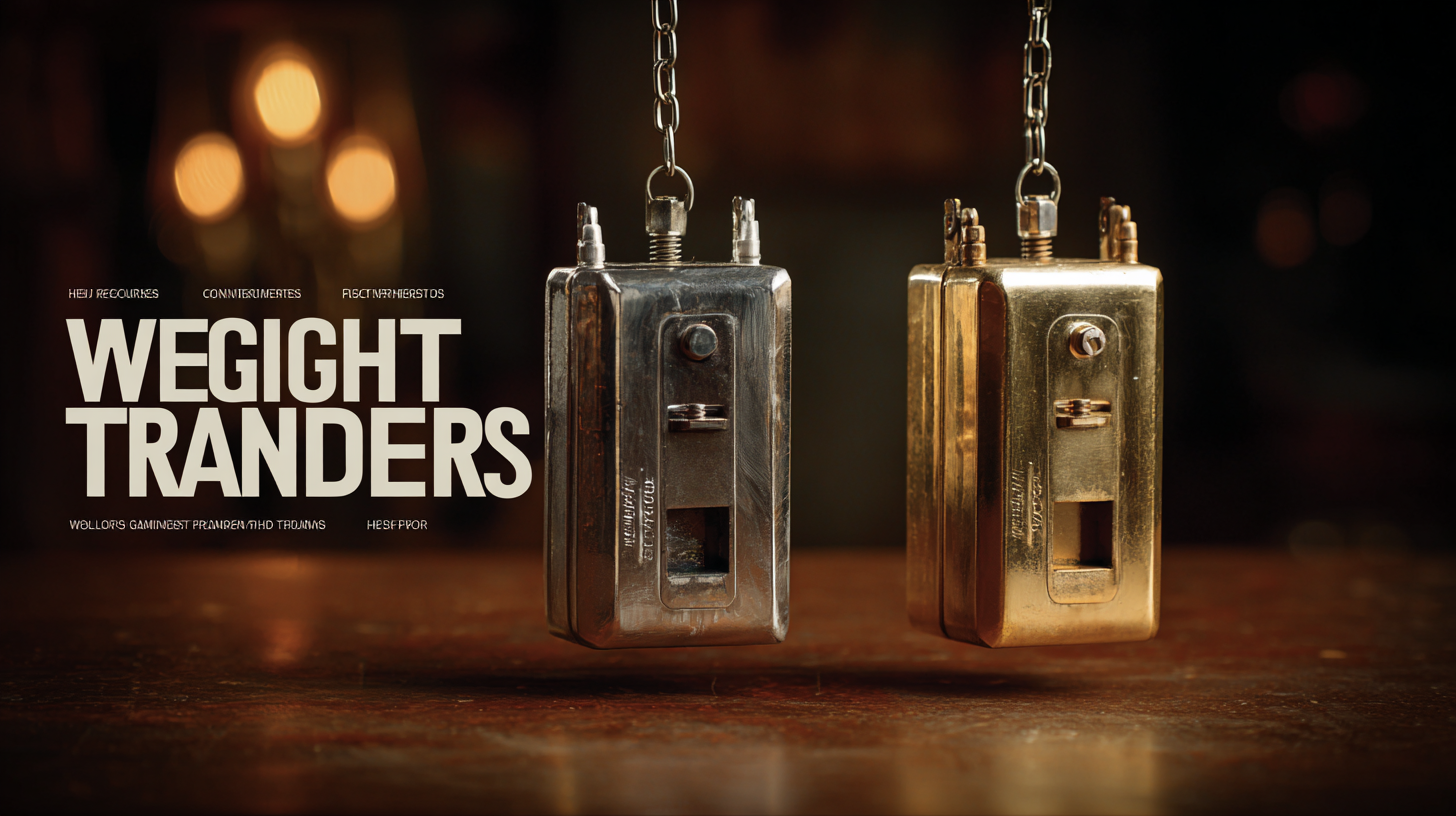 sales@loadcellsensor.com
sales@loadcellsensor.com

Ultimate Guide to Comparing the Top Weight Transducers for Global Buyers
In the realm of precision measurement, Weight Transducers play a crucial role in various industries, from manufacturing to healthcare. As global buyers navigate the complexities of selecting the ideal transducers for their specific applications, understanding the key features and performance metrics becomes essential. This ultimate guide aims to equip potential buyers with top strategies for comparing the leading weight transducers available in the market. By exploring critical factors such as accuracy, load capacity, environmental adaptability, and integration capabilities, we intend to simplify the decision-making process. Whether you are upgrading existing systems or embarking on new projects, our comprehensive insights will help ensure that you choose a weight transducer that meets your exact needs while optimizing performance and reliability.

Key Features to Consider When Choosing Weight Transducers for Export
When selecting weight transducers for export, buyers must consider several key features that can significantly impact performance and reliability. According to a report from MarketsandMarkets, the global load cell market is projected to reach approximately $3.82 billion by 2025, with a compound annual growth rate (CAGR) of 5.3%. This growth underscores the increasing reliance on accurate weight measurement in industries such as manufacturing, logistics, and agriculture. Buyers should prioritize transducers that offer high accuracy, with some models achieving precision levels of up to 0.01% of the full scale.

Another critical feature is the environmental durability of weight transducers. Industry data reveals that transducers used in harsh environments can experience degradation over time, affecting their reliability. Opting for models with robust, weather-resistant casings and appropriate ingress protection ratings (IP68 or higher) can ensure longevity and consistent performance in varying conditions. Additionally, connectivity and integration capabilities with existing systems are increasingly important; transducers that support digital communication protocols can facilitate real-time data collection and analysis, which is essential for modern industrial applications.
Top Manufacturing Countries for Reliable Weight Transducers in Global Markets
The global market for weight transducers is primarily driven by advancements in sensor technology and increasing demand across various industries such as manufacturing, logistics, and healthcare. According to a recent industry report, the market for pressure sensors, which include weight transducers, is expected to reach approximately $18 billion by 2025, growing at a CAGR of 6.5%. This growth can be attributed to the rising need for accurate measurement and monitoring within automated systems.
Geographically, the top manufacturing countries for weight transducers are leading the way in innovation and reliability. The United States, Germany, and Japan are recognized as the key players in this field, each country contributing significantly to R&D and production capabilities. For instance, the German market alone is projected to see robust growth, driven by the automotive and aerospace sectors, which require precise weight measurement. As businesses increasingly prioritize sustainability and efficiency, the demand for high-quality weight transducers from these regions will likely continue to rise, reinforcing their positions in the global market.
Ultimate Guide to Comparing the Top Weight Transducers for Global Buyers
| Country | Average Price (USD) | Accuracy (±g) | Max Capacity (kg) | Common Applications |
|---|---|---|---|---|
| USA | $200 - $400 | ±0.1g | 1000 | Industrial, Medical |
| Germany | $250 - $450 | ±0.05g | 500 | Automotive, Research |
| China | $150 - $300 | ±0.2g | 800 | Retail, Logistics |
| Japan | $280 - $500 | ±0.1g | 300 | Food Processing, Aerospace |
| India | $100 - $250 | ±0.5g | 600 | Pharmaceuticals, Education |
Evaluating Accuracy and Precision of Weight Transducers for International Buyers
When it comes to evaluating the accuracy and precision of weight transducers, buyers in the global market need to consider several crucial factors. Accuracy refers to how close a measured weight is to the true value, while precision relates to the reproducibility of measurements under the same conditions. For international buyers, understanding these nuances is essential in selecting the right equipment. Various technologies are employed to enhance the performance of weight transducers, including advanced sensor designs and sophisticated algorithm implementations that minimize errors during operation.
Moreover, the adoption of machine vision and precise weighing sensors is revolutionizing industries ranging from agriculture to healthcare. In agricultural sectors, innovative methods such as density detection combined with machine vision systems are becoming popular for grading and assessing the freshness of produce, including eggs. The ability to quickly and accurately measure weight is paramount, as it directly impacts inventory management and sales strategies. As technology advances, international buyers will benefit from tools that not only improve measurement accuracy but also provide comprehensive data analysis capabilities, ensuring a more informed decision-making process in their purchasing endeavors.
Cost-Effectiveness Strategies for Sourcing Weight Transducers Worldwide
When sourcing weight transducers globally, cost-effectiveness is paramount. As the Maintenance Repair & Operations (MRO) market is projected to grow steadily at a CAGR of 2.2% from 2024 to 2030, understanding how to optimize your procurement strategies will be essential. Buyers should focus on finding suppliers that not only offer competitive pricing but also high-quality products.

Tip 1: Leverage bulk purchasing. By forecasting your needs and buying in larger quantities, you can often access significant discounts, which will lower your overall cost per unit.
Additionally, consider the total cost of ownership beyond just the initial purchase price. Factors such as maintenance expenses, warranty terms, and the expected lifespan of the transducers play a crucial role in determining the true value of your investment.
Tip 2: Engage in thorough supplier evaluation. Research potential suppliers not only based on price but also on their service reliability and reputation. This can prevent unexpected costs later on, ensuring savings in both the short and long term.
Incorporating these strategies will enable global buyers to make informed decisions when comparing the top weight transducers in the market.
Understanding Certification Standards for Exporting Weight Transducers Globally
When exporting weight transducers globally, understanding certification standards is crucial. Different countries have varying requirements and regulations that dictate how weight transducers must be designed, tested, and certified. For instance, the European Union requires compliance with the MID (Measuring Instruments Directive), ensuring that transducers meet safety and accuracy guidelines. Similarly, in the United States, you may encounter regulations set by the NIST (National Institute of Standards and Technology), which establishes standards for weighing instruments to ensure precision and reliability.
Certification is not just about compliance; it also enhances product credibility in global markets. Buyers are increasingly looking for assurance that weight transducers will perform consistently and accurately. By obtaining certifications such as ISO 9001 for quality management systems or OIML (International Organization of Legal Metrology) compliance, manufacturers can demonstrate their commitment to quality and safety. These certifications can significantly impact a buyer's purchasing decisions, making it essential for manufacturers to understand and navigate the certification landscape to succeed in international trade.

